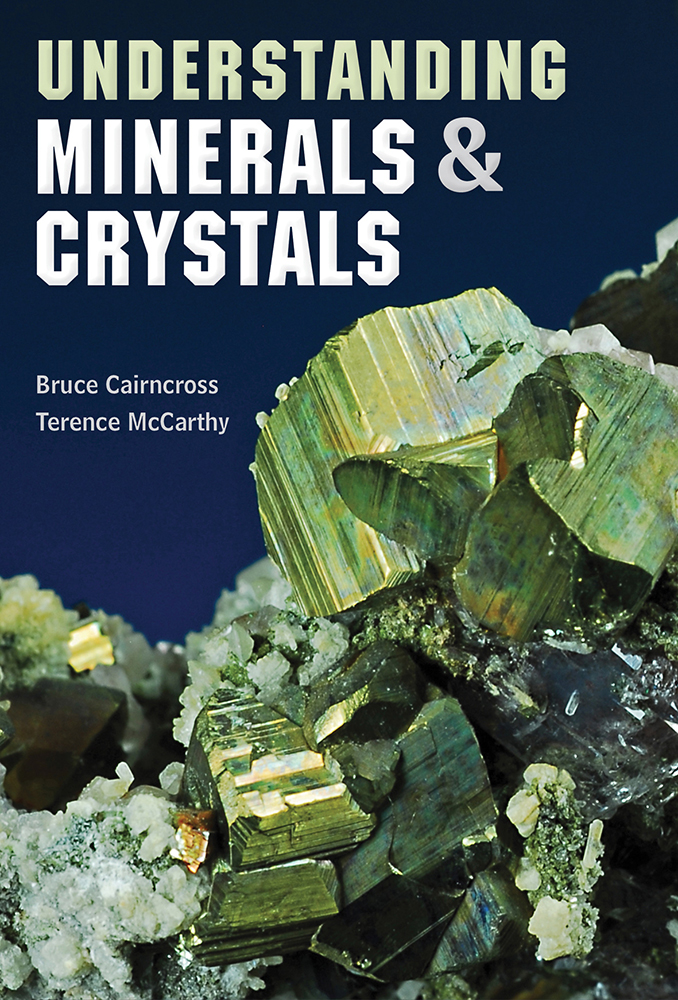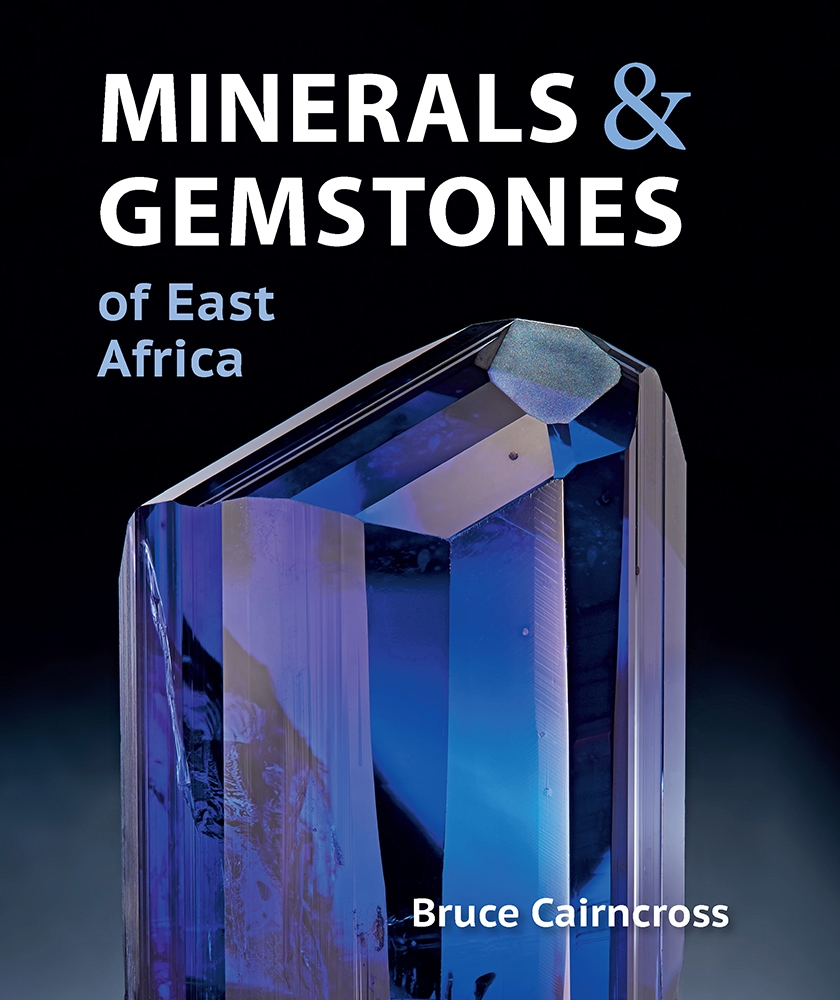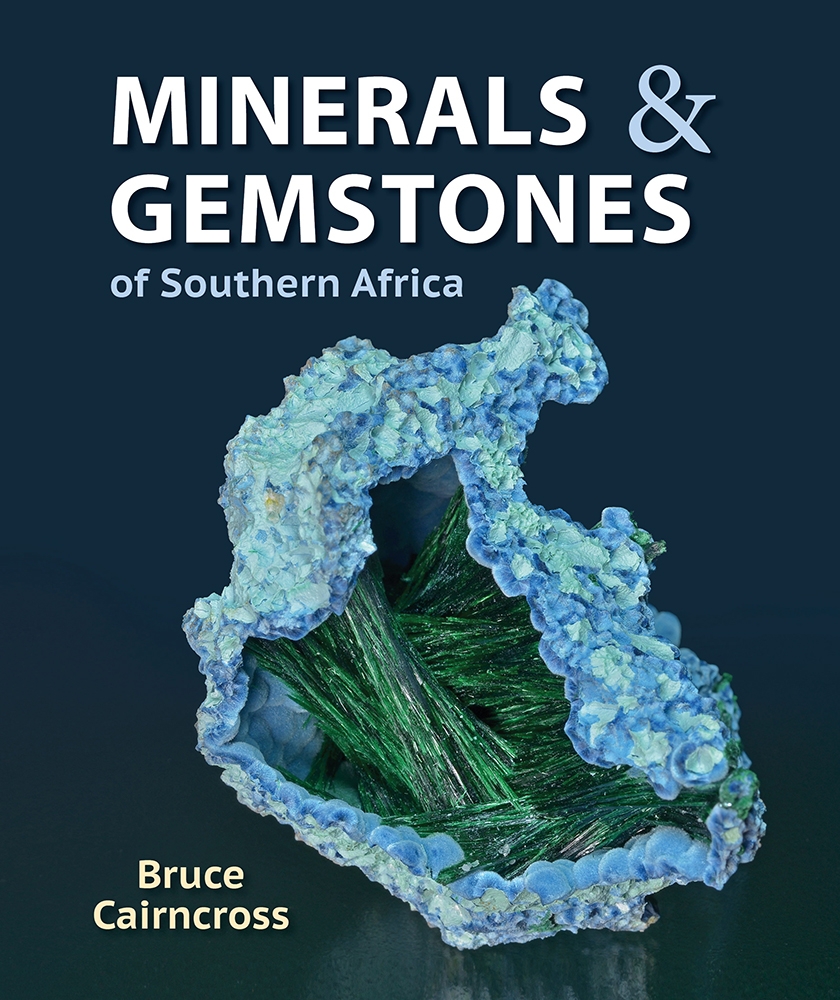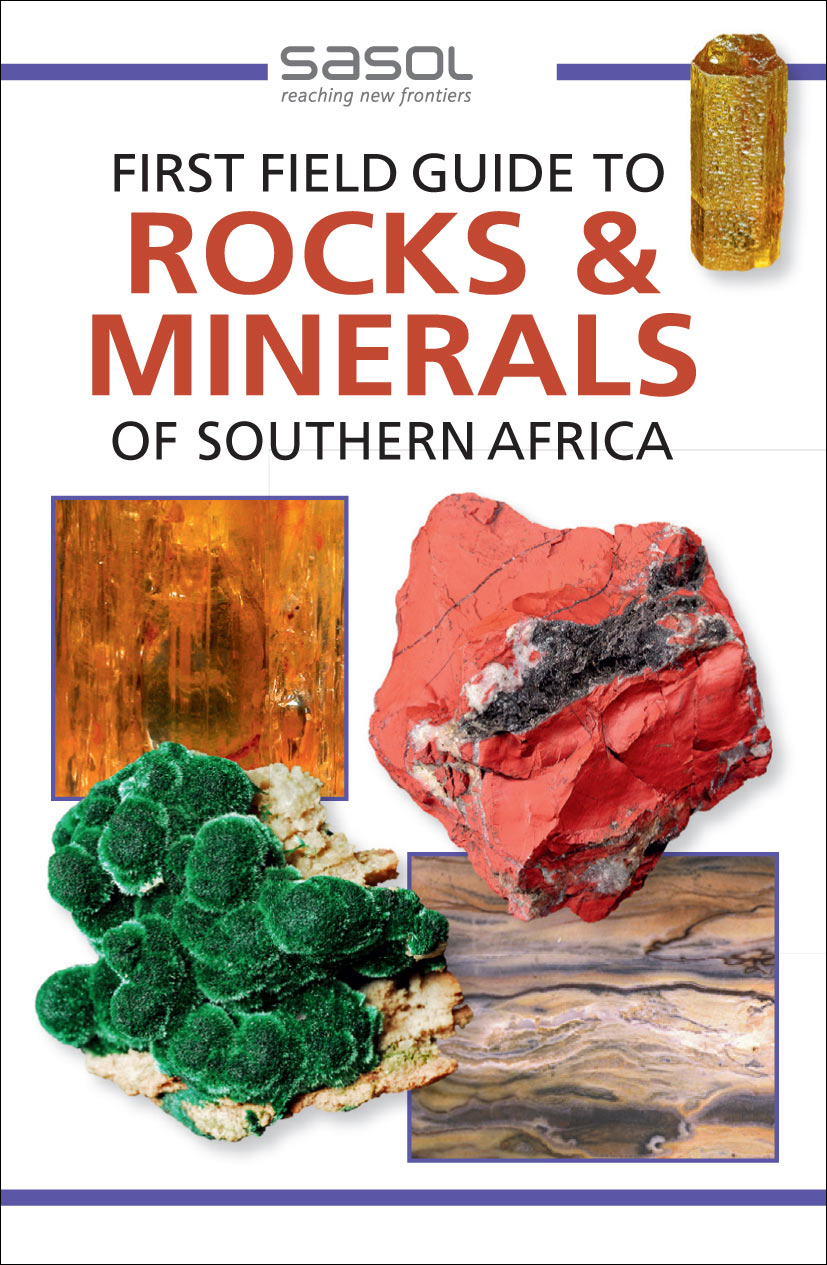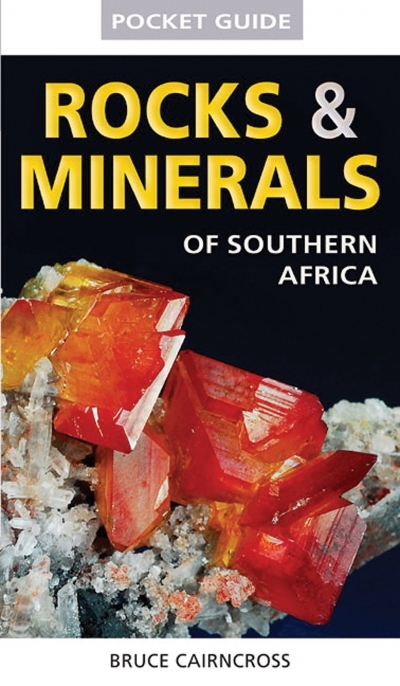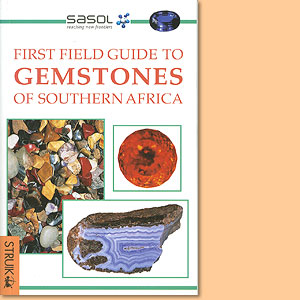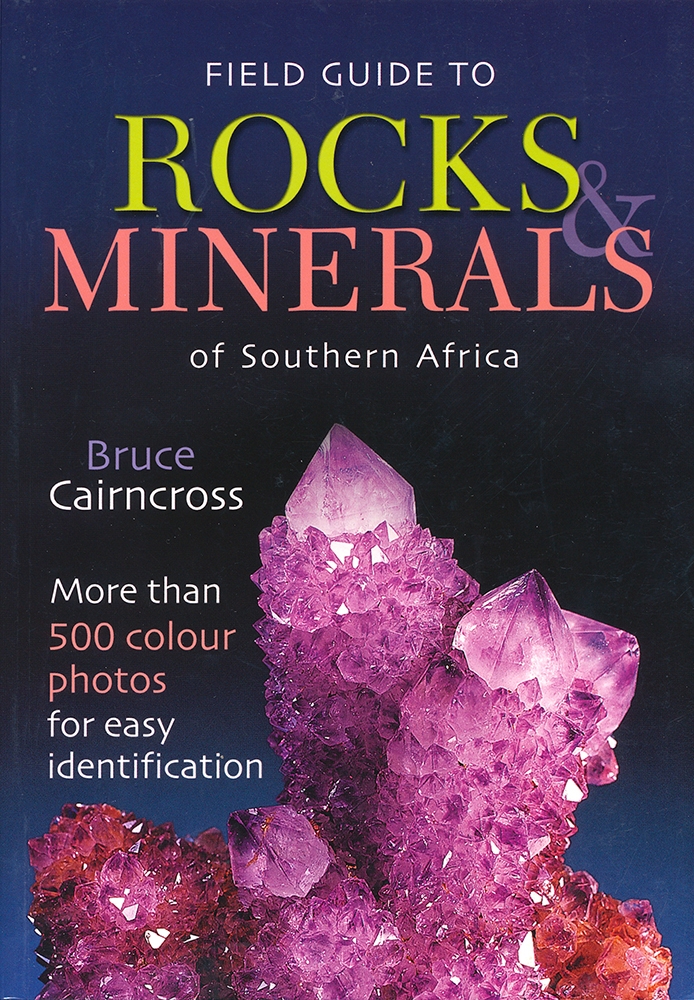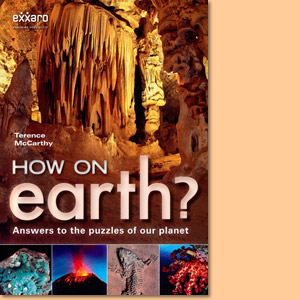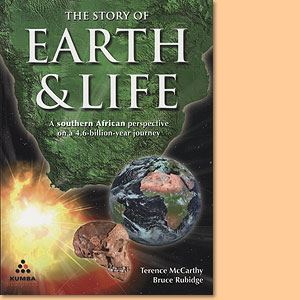Understanding minerals and crystals, by Terence McCarthy and Bruce Cairncross
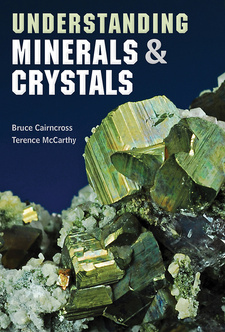
Understanding Minerals and Crystals, by Terence McCarthy and Bruce Cairncross. Penguin Random House South Africa. Cape Town, South Africa 2015. ISBN 9781431700844 / ISBN 978-1-4317-0084-4
Terence McCarthy's and Bruce Cairncross's Understanding Minerals and Crystals is an invaluable guide for anyone interested in the earth sciences or in mineral collecting.
Bruce Cairncross Terence McCarthy
Chemical elements such as iron, aluminium, oxygen, carbon and many others are familiar to us all, but less well known is the form in which these substances occur in Nature. Chemical elements in fact occur in the form of minerals, which make up the solid Earth's crust. A mineral can be broadly defined as a naturally occurring chemical compound of inorganic origin. Mineralogists generally add an additional qualifier, namely that a mineral should have a definite, regular internal atomic structure. This qualifier separates minerals, which are crystalline solids, from non-crystalline materials, such as amber (fossilized tree resin) for example (figure 1.1), which are termed mineraloids. Minerals can be composed of many chemical elements in combination or they may consist of only one element. Nevertheless, all have a definite, well-defined chemical composition, which is usually expressed as a chemical formula such as NaCl (sodium chloride) for the mineral halite (figure 1.2). Minerals are extremely important because they are the raw materials from which we extract essential commodities, such as iron (figure 1.3), manganese, silicon or aluminium, on which our civilization depends. We also use some minerals in their natural state because of their particular chemical or physical properties, for example agricultural lime, which is very important in crop production, or talc, an essential ingredient of talcum powder. Perhaps even more importantly, minerals are the building blocks from which rocks are made and thus form the solid parts of the entire Earth (figure 1.4). We are surrounded by minerals! To really understand the Earth and how it works, knowledge of minerals is absolutely essential. Little wonder the study of geology begins with mineralogy, the study of minerals. Minerals vary widely in their chemical constitution and their physical properties, such as hardness and colour. Some form very attractive crystals (figure 1.5) and most natural history museums have a section devoted to the display of such crystals. But well-formed crystals are rare and most mineral specimens we come across are simply irregular lumps. They are nevertheless crystalline in that they have regular internal order in their atomic structures, but this order is not immediately apparent as the samples have an irregular external shape. The ability to identify the more common minerals is an essential skill for anyone interested in geology. Moreover, mineral collecting is a popular pastime in its own right and collectors need to be able to identify mineral specimens. So how does one go about identifying a mineral? There are many different ways to do this. The more sophisticated methods involve examining thinly sliced samples under specially designed petrographic microscopes, or chemically analyzing the sample or even probing its crystalline structure using X-rays. Naturally, these require very sophisticated laboratory equipment and are only used by the professional mineralogist. At the other end of the spectrum is what is usually termed 'hand specimen' mineralogy. The term implies identifying mineral specimens without recourse to sophisticated laboratory equipment. Hand specimen mineral identification relies on a few very simple tests, which can be carried out just about anywhere, as they require the most rudimentary equipment. Such methods are widely used by hobbyists and even by practising geologists in the course of their daily work in mines or in the field, where rapid identification of minerals is needed in the absence of laboratory equipment. While mineral identification is a useful skill, it is also helpful to understand the principles underlying the formation of minerals, which are responsible for the differing properties and crystal forms of minerals. [...]
This is an excerpt from Understanding Minerals and Crystals, by Terence McCarthy and Bruce Cairncross.
Title: Understanding minerals and crystals
Author: Terence McCarthy; Bruce Cairncross
Genre: Mineral and Crystal Guide
Publisher: Penguin Random House South Africa
Cape Town, South Africa 2015
ISBN 9781431700844 / ISBN 978-1-4317-0084-4
Softcover, 17 x 24 cm, 304 pages, 500 photographs, 140 illustrations
McCarthy, Terence und Cairncross, Bruce im Namibiana-Buchangebot
Understanding minerals and crystals
Minerals & Crystals takes a close look at minerals, how they form, why they differ and how to go about identifying them.
Minerals & Gemstones of East Africa
Minerals & Gemstones of East Africa covers Burundi, Kenya, Rwanda, Tanzania and Uganda.
Minerals and Gemstones of Southern Africa
Minerals and Gemstones of Southern Africa introduces to the more important mineral and gem localities from Botswana, Eswatini, Lesotho, Namibia and South Africa.
First Field Guide to Rocks and Minerals of Southern Africa
This First Field Guide introduces the most important and interesting rocks and minerals of Southern Africa.
Rocks & Minerals of Southern Africa Pocket Guide
From the series Pocket Guide this is Rocks & Minerals of Southern Africa.
First Field Guide to gemstones of Southern Africa
This little guides from the series First Field Guide is a good resource for beginners on gemstones of Southern Africa.
Field Guide to Rocks and Minerals of Southern Africa
A field guide to Rocks and minerals of Southern Africa covers Namibia, Botswana, Zimbabwe, Lesotho, Swaziland and southern Mozambique.
How on Earth?
How on Earth? sets out to answer puzzles in nature and the environment of Africa and the world.
The Story of Earth and Life. A southern African perspective on a 4.6-billion-year journey
The Story of Earth and Life explaines southern African scientific knowledge in a fascinating and easy-to-understand way.

